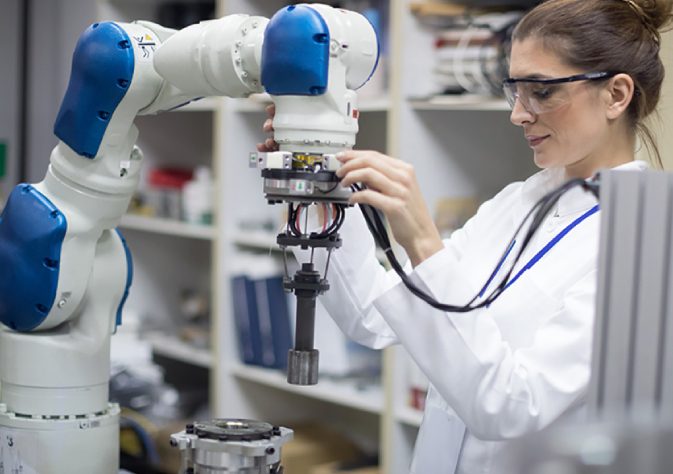The promising future with cobots
Collaborative robots are designed for working in a collaborative space with direct human interaction. So what exactly is collaborative space? It is the safe space in which both humans and robots work without any conflict. It is a promising symbiotic relationship. Reasearchers and developers are so confident that this is the best kind- the Human Robot Interaction- where both species can co-exist in safety with increased productivity,
Robots are designed to do a repetitive task. Humans are blessed with cognitive and rational skills. Collaborating one with the other ends up with the work being optimally shared. Various levels of automation are made possible along with human interaction.
Collaborative robots do not require extensive programming. In fact their design and structure differ vastly from other robots. Cobots are designed with safety in mind because of their close proximity to humans. They are light weight and have rounded features.
Cobots are considered the best solutions for a wide range of applications. The list includes the automotive industry, plastic industry, packaging and co-packing, metal fabrication, agriculture, medical and scientific research, pharmaceutical and chemical industries. Cobots are deployed in hazardous work environments. Remote –controlled cobots have become indispensable . Above all, the cobot has alleviated fears of the human workforce being replaced by robots. It has played a substantial role in instilling confidence on robots by humans.
Types of Cobots
Safety is a prime aspect that can never be compromised when man and machine are together. The aspect of safety combined with programming features defines the 4 types of cobots.
- Safety Monitored Stop: This type of cobot uses minimal human interaction. A series of smart sensors are leveraged with an industrial robot that stops functioning when a human enters its workspace.
- Speed and Separation: They are quite similar to Safety Monitored Stop cobots because they also leverage the industrial robot. But the difference lies in the use of advanced vision sensors . The sensors programmed to slow down the machine when there is human proximity and stop all together when the human gets too close to the machine.
- Power and Force Limiting: They come with rounded safety features and collision sensors to detect humans and quickly stop operations.
- Hand Guiding: Guided by an operator with a hand-guided device while performing a task in automatic mode, the cobot responds only to the operator’s direst control input. Hence, the cobot can be manipulated into position while it supports a heavy object.
All cobots are built to human interaction in mind , although the interaction is mostly only periodical. Collaborative robots have set new trends and revolutionized industrial use to robots. They will in the near future be the very driving force behind Robotics.

